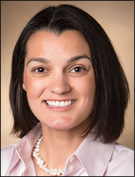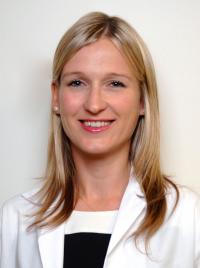Wellness, Diversity, Inclusion Key to Advancing Family Leave Policies
Experts discuss how family leave policies must adapt to ever-changing needs



While advances have been made in family leave policies, a stigma still exists today in radiology — for a number of reasons, experts say.
Radiologists and trainees seeking family leave may worry about colleagues burdened with covering for them, potentially fanning the flames of burnout. They may fear negative comments, being looked down on or being passed over for a promotion.
So what is the solution?
Changing an engrained mindset is never easy, but the first step is making a shift toward wellness, inclusivity and gender diversity and incorporating those tenets into family leave policies said Lucy Spalluto, MD, MPH, vice chair of Health Equity, director of Women in Radiology and associate director of the Office of Diversity and Inclusion for the Department of Radiology at Vanderbilt University Medical Center.
“It is important for policies to be inclusive of all individuals,” Dr. Spalluto said. “Different personal needs may arise that create the need for leave.”
Part of this shift is recognizing that family leave is beneficial for all radiologists, regardless of gender.
One piece of inclusivity is the use of gender-neutral terms. “Gender neutral language is critical in designing leave policies that meet the needs of all,” she said.
Letting go of the traditional way of thinking is also critical, said Kate Hanneman, MD, MPH, a cardiothoracic radiologist and clinician scientist at Toronto General Hospital, and assistant professor and director of Cardiac Imaging Research at the University of Toronto, Canada. Dr. Hanneman is vice chair of the RSNA Professionalism Committee.
“The mentality of ‘paying one’s dues’ does not promote wellness,” Dr. Hanneman said. “Yet the culture of, ‘it was this way when I trained’ or ‘I only took this amount of leave’ still exists.”
Currently, paid leave is not included under the federal Family and Medical Leave Act (FMLA), which requires companies to provide 12 weeks of unpaid leave to employees. Trainees must work for the same employer for at least one year for a minimum of 1,250 hours.
But there is some flexibility under FMLA allowing radiology institutions to develop their own policies, including offering paid family leave, which is necessary to move family leave policies toward the future, Dr. Hanneman said.
Dr. Hanneman mentioned two intertwined components of family leave policies that are critical to wellness: paid leave and sufficient time.
“There are physicians who may not be able to take several months of leave without financial support,” she said. “Policies need to take the financial component into account as well.”
In addition, it has been established that positive health outcomes for the entire family are associated with equitable, paid family leave policies.
An added complication for trainees is that taking time off could delay graduation. The American Board of Radiology (ABR) recently opened discussion on this issue in response to an American Board of Medical Specialties (ABMS) requirement to clarify residency leave policy.
A specific option that has received broad support is seven work weeks (35 workdays) per year, averaged over the length of a four-year residency. This would be the equivalent of four weeks of vacation per year, plus 12 weeks for parental, caregiver and medical leave.
In a letter to the ABR, RSNA Board Chair Matthew A. Mauro, MD, said, “We appreciate ABR’s efforts toward achieving the important balance of physician wellness and ensuring competency within the field, while embracing policies that support diversity and inclusion.”
Returning to Work
Returning to work after family leave can be stressful, particularly for new parents who are learning to balance the demands of parenthood and work, Dr. Hanneman said.
Creating policies that accommodate flexibility in returning to work are important. One solution is a gradual return to work, she said.
“Having the opportunity to come back in a graded manner — part-time for example or taking fewer calls up front — is one option for supporting individuals as they come back to work,” Dr. Hanneman said.
Family leave policies must also address how lactating physicians can breastfeed at work.
“It is imperative that policies support individuals who choose to breastfeed,” Dr. Spalluto said. “Beyond offering safe and private facilities equipped with electrical outlets and a storage facility for breast milk, these policies should also offer protected time for expressing breast milk.”
Creative Solutions
Moving toward a culture of wellness requires creative problem solving. For example, radiology can take an innovative approach to missed calls while on leave.
“Some organizations may not require making up missed calls as leave policies are equitably applied to all, and all may benefit from them,” Dr. Spalluto said. “Another option to consider for anticipated leave is to ‘bank’ calls prior to leave.”
Changes to current board exam requirements represent an opportunity for positive change in the field of radiology. For those in the midst of family planning, the timeline and eligibility requirements currently in place for board exams can act as a barrier.
Dr. Hanneman said that some physicians delay starting families until after board exams or after establishing their professional careers, only to regret it later.
“Less stringent requirements in terms of the timing of the boards as well as widening the window of eligibility for students taking the exams could help,” she said.
Institutions that do change their family leave plans shouldn’t hesitate to spread the word, Dr. Hanneman said.
“As more institutions update their family leave policies, it is important that they share their experiences so that other radiology leaders are inspired to make changes as well,” Dr. Hanneman said.
For More Information
Access Dr. Mauro’s letter to the American Board of Radiology.
Access the Radiology editorial, “Family/Medical Leave for Diagnostic Radiology, Interventional Radiology, and Radiation Oncology Residents in the United States: A Policy Opportunity.”
View a video of Dr. Hanneman discussing Work Life Balance for Radiologists with Young Families.
